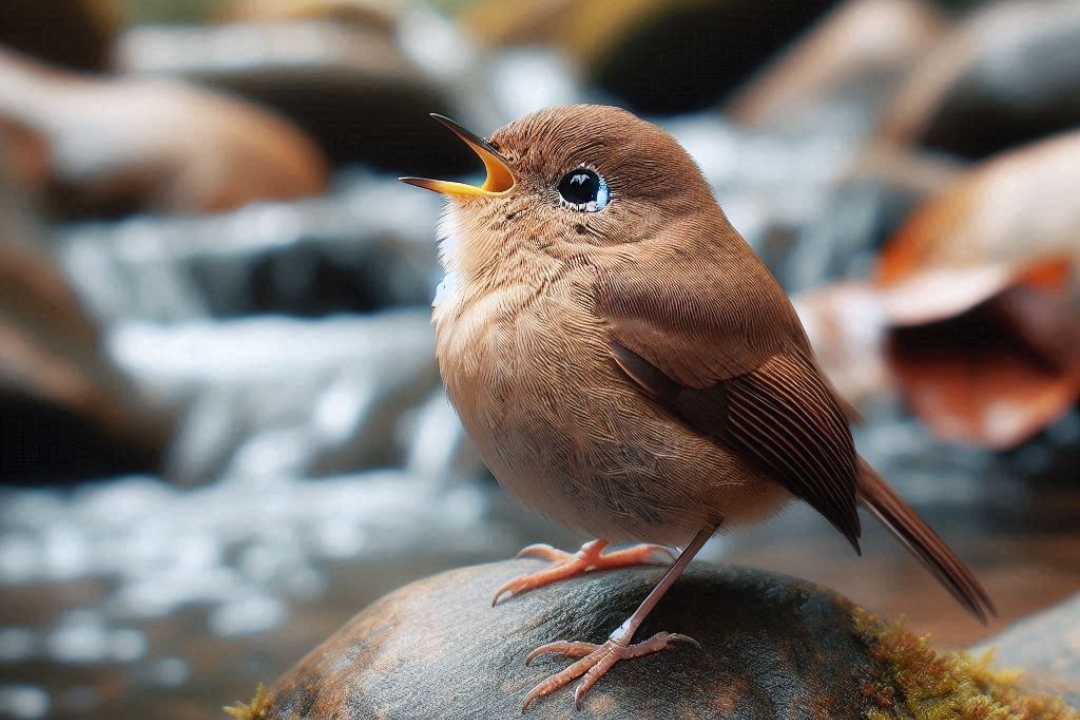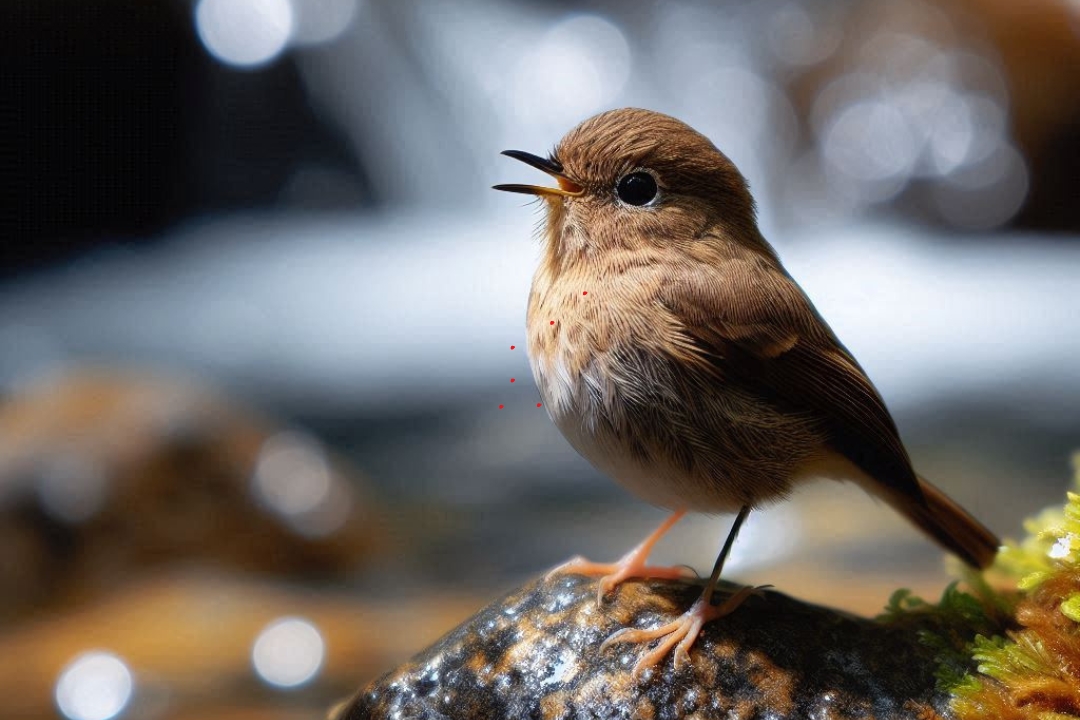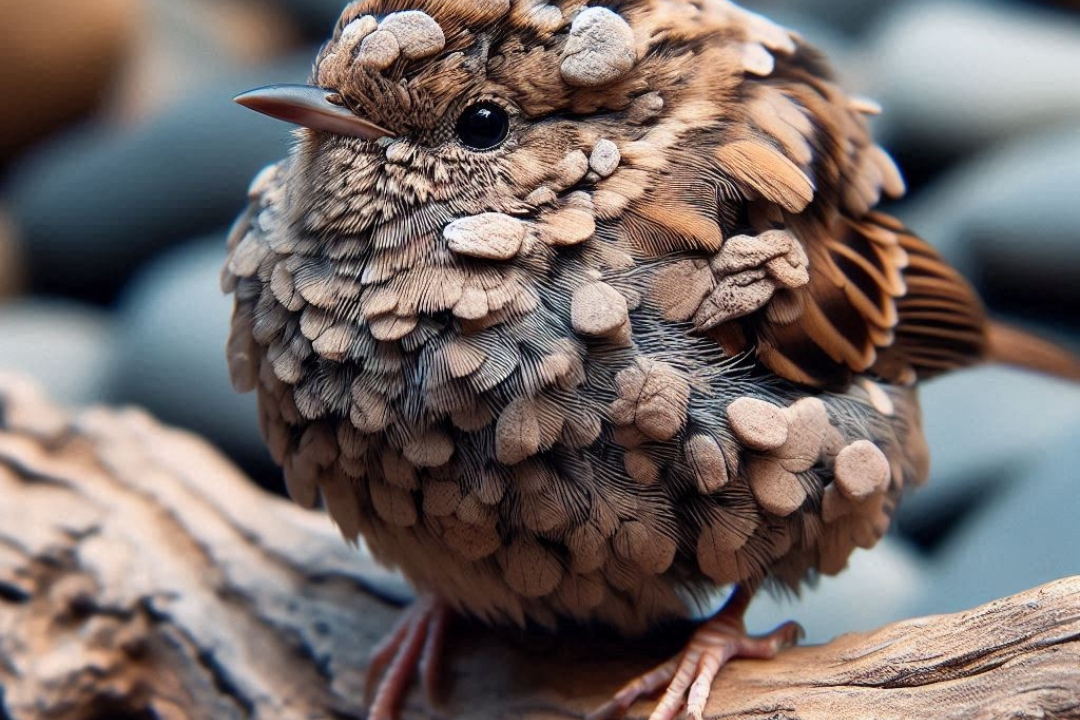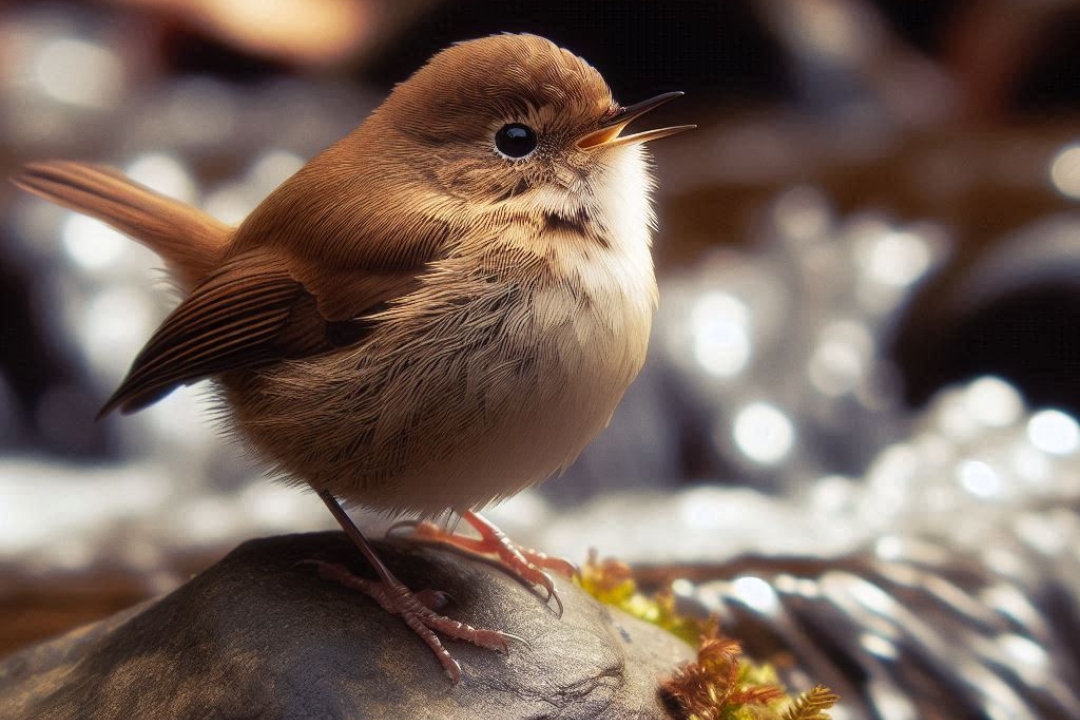The Rock Sparrow: A Symbol of Resilience and Adaptation
Introduction
The Stone Sparrow (Petrolia) is a fascinating avian creature assortments known for its important adaptability and strength. This little passerine bird, having a spot with the family Passeridae, shows a unique blend of approaches to acting and characteristics that make it a subject of interest for birdwatchers and ornithologists the equivalent. In this article, we will research the Stone Sparrow’s genuine characteristics, living space tendencies, approaches to acting, and security status, uncovering knowledge into why it is an especially persuading creature types
Physical Characteristics
Rock Sparrows are moderately little birds with a powerful form. Grown-ups ordinarily measure between 14 to 16 centimeters (5.5 to 6.3 inches) long and weigh around 20 to 30 grams (0.7 to 1 ounce). Their plumage is by and large a blend of earthy colors and grays, with guys frequently showing a more articulated example of streaks and spots.
The most distinctive element of the Stone Sparrow is its pale, streaked bosom, combined with an obvious dull line running from the mouth through the eye, giving it a fairly “concealed” appearance.

Habitat and Distribution
Rock Sparrows are astoundingly adaptable and can thrive in different circumstances. Their fundamental living space integrates unpleasant areas, feigns, and open scrublands. They are customarily found in southern Europe, northern Africa, and bits of the Middle East and Central Asia. In Europe, their range loosens up from the Iberian Body of land toward the eastern Mediterranean, while in Africa, they are unavoidable in the Maghreb region.
These birds are particularly joined to locales with sufficient stone plans and opening, which give incredible settling objections and security from trackers. In metropolitan locales, Rock Sparrows have in like manner changed well, often choosing structures and other man-made structures.
Behavior and Diet
Rock Sparrows are social birds and are ordinarily tracked down in little surges, particularly past the raising season. Their eating routine primarily contains seeds, bugs, and other minimal yellow animals. During the raising season, they may similarly deal with their young with a further degree of protein-rich food to help their quick turn of events.
These sparrows are known for their specific calls, which consolidate a movement of sharp, deafening notes. Their tunes are used for correspondence as well as expect a section in spreading out and protecting space

Breeding and Nesting
The raising season for Rock Sparrows consistently occurs between pre-endlessly summer. They manufacture their homes in safeguarded regions like separated in rocks or designs, using a mix of grasses, feathers, and other plant materials.
The female commonly lays between 3 to 5 eggs for each hold, which she incubates for close to fourteen days. The two gatekeepers are related with dealing with and truly zeroing in on the chicks, which fledge about three weeks resulting to brooding
Conservation Status
The Stone Sparrow is correct now designated a kinds of “Least Concern” by the Overall Relationship for Protection of Nature (IUCN). This status reflects its all over scattering and stable people designs.
In any case, similarly as different species, it faces expected risks from living space disaster and regular changes, which could influence its future flourishing. Protection tries to defend their customary regions and moderate the effects of natural change are significant to ensuring that Rock Sparrows continue to thrive.
Habitat Adaptations
Rock Sparrows are exceptionally flexible and can live in various conditions. Their tendency for unpleasant scenes and cliffs comes from their prerequisite for secure settling districts and protection from trackers. In areas with confined standard stone turns of events, they have actually acclimated to metropolitan circumstances, choosing designs and frameworks. This adaptability has engaged them to go on in an extent of conditions, from completely dry deserts to quiet zones, displaying their flexibility to developing circumstances.
Their ability to thrive in metropolitan settings is particularly basic. Rock Sparrows have been seen getting comfortable city conditions, utilizing edges, overhang, and, shockingly, abandoned structures. This metropolitan change displays their adaptability as well as elements the way human-changed scenes can give new entryways to untamed life.

Social Behavior and Communication
Rock Sparrows are social birds, and their way of behaving is many times affected by their social design. During the non-reproducing season, they structure free rushes that can go from a couple of people to a few dozen. These herds give security in larger groups and increment searching proficiency. Social communications inside these herds incorporate different vocalizations and showcases, which assist with keeping up with bunch attachment and oversee social orders.
Their correspondence is portrayed by a progression of sharp, shrill calls and peeps. These vocalizations fill various needs, including flagging caution, planning bunch developments, and laying an out area. During the rearing season, the male Stone Sparrow performs elaborate tune showcases to draw in females and shield his region from rivals
Diet and Feeding Habits
The eating routine of the Stone Sparrow is moved and reflects its tricky dealing with procedures. They generally consume seeds from grasses and weeds, but their eating routine in like manner consolidates a great deal of bugs, particularly during the raising season when protein confirmation is huge for chick improvement. This moved eating regimen helps them with acclimating to different circumstances and infrequent changes.
In metropolitan districts, Rock Sparrows have been seen profiting from discarded food things and food scraps, showing their ability to change their scavenging behavior to human development. This flexibility in diet adds to their advancement in an extent of domains.
Breeding Behavior and Nesting
Rock Sparrows are known for their ingenious settling propensities. Their homes are regularly underlying shielded areas that offer insurance from the components and hunters. In regular settings, they favor hole in rough outcrops or bluffs. In metropolitan regions, they utilize man-made designs like structure edges and ventilation openings.
The reproducing season includes many-sided romance ceremonies. Guys perform tune shows and take part in visual showcases, like puffing out their plumes and jumping around, to draw in females. When a couple has framed, they construct a home together, with the female laying a grasp of 3 to 5 eggs. The two guardians alternate brooding the eggs and taking care of the chicks once they hatch.
Ecological Role
Rock Sparrows expect a basic part in their surroundings. As seed eaters, they help with controlling plant masses and add to the dispersal of seeds. Their rummaging affinities can affect plant neighborhood and plan. Moreover, by consuming bugs, they help with regulating bug peoples, which can help various species and stay aware of normal balance.
Their settling practices furthermore have ideas for their ongoing situation. By choosing structures and in metropolitan locales, Rock Sparrows add to the metropolitan biodiversity, making metropolitan regions more obliging to normal life. Their presence in metropolitan areas can similarly expose issues about the meaning of safeguarding green spaces and ordinary regular environmental elements amidst human development.
Conservation and Future Outlook
While the Stone Sparrow is at this point designated a sorts of “Least Concern,” consistent natural changes present potential risks. Climate destruction, natural change, and pollution could influence their general populations later on. Continued to check and protection tries are essential to ensure that Rock Sparrows stay a prospering piece of their surroundings.
Safeguarding strategies should focus in on safeguarding normal regular environmental factors, propelling biodiversity in metropolitan districts, and keeping an eye on natural change. Public care and obligation to conservation activities can in like manner expect a vital part in protecting this flexible and solid species.

Behavioral Ecology
The Stone Sparrow (Petronila) is a bird that shows an extent of charming approaches to acting connected to its flexible nature. Its approach to acting, from social participations to settling procedures, gives significant pieces of information into its perseverance parts and ecological positions
Social Structure and Flocking Behavior
Rock Sparrows are gregarious birds, particularly outside the raising season when they structure free surges. These groups are dynamic, much of the time moving in size and game plan considering food openness and biological conditions. The social plan inside these gatherings is overall fluid, yet there are spread out hierarchies that influence induction to resources and mating likely entryways.
Hurrying behavior offers a couple of advantages, including extended carefulness against trackers, more capable scavenging, and social learning. By rummaging in get-togethers, Rock Sparrows can benefit from the total data on where to find food and how to avoid chances. Likewise, the presence of various individuals helps in perceiving and answering trackers even more rapidly.
Vocalizations and Communication
Correspondence among Rock Sparrows is perplexing and different. Their vocal assortment consolidates different calls used for different purposes. Alert calls are sharp and ear-splitting, making various people from the gathering mindful of the presence of a tracker. These calls can be essential for perseverance, as they brief the gathering to take tricky actions.
During the repeating season, folks partake in perplexing song exhibits to attract females and safeguard their district. These tunes are a mix of tremble like notes and short emissions of sound, and their unpredictability can hail the prosperity and inherited nature of the male. The quality and repeat of the tune can influence female choice and raising accomplishment.

Territoriality and Nesting
Territoriality in Rock Sparrows is by and large expressed during the raising season. Folks spread out and watch locales using the two vocalizations and genuine exhibits. These districts are separate by tune posts, every now and again arranged on high perches like shakes or building edges. The size of a male’s locale can change dependent upon food openness and contention from various folks.
The settling site assurance is a fundamental piece of their regenerative technique. Rock Sparrows manufacture their homes in safeguarded regions that offer security from the parts and trackers. The home plan is usually a free cup delivered utilizing grasses, feathers, and various materials. In metropolitan circumstances, they change by choosing edges, building split, and other human-made structures.
Ecological Interactions
Rock Sparrows assume a few significant parts in their biological systems. Their taking care of propensities, settling ways of behaving, and communications with different species add to the environmental equilibrium
Seed Dispersal and Plant Dynamics
By consuming seeds from various plants and thus releasing them in different regions, they work with the spread of plant specifies. This seed dispersal is particularly huge in unpleasant or very dry circumstances where plant advancement can be meager.
Insect Population Control
Rock Sparrows’ diet also includes insects and other invertebrates. By preying on these organisms, they help control insect populations. This predation can have cascading effects on the ecosystem, influencing the abundance and diversity of insect species, which in turn affects other wildlife.
Urban Adaptation and Biodiversity
In urban areas, Rock Sparrows contribute to urban biodiversity. Their ability to nest on man-made structures and forage in human-altered landscapes adds a layer of complexity to city ecosystems. Their presence in cities can also act as an indicator of the health of urban green spaces and the effectiveness of conservation measures in these areas.
Habitat Loss and Fragmentation
Living space misfortune and fracture because of metropolitan extension, agrarian turn of events, and foundation tasks can affect Rock Sparrow populaces. The annihilation of normal rough outcrops and bluffs can diminish the accessibility of reasonable settling destinations and taking care of grounds
Climate Change
Environmental change represents a critical danger to many bird species, including the Stone Sparrow. Changes in temperature, precipitation examples, and outrageous climate occasions can adjust the accessibility of food and settling destinations. Also, environmental change can influence the conveyance of plant species and bugs that are pivotal for the Stone Sparrow’s eating routine
Pollution
Contamination, including air and light contamination, can affect Rock Sparrows and their territories. Air contamination can influence their wellbeing and lessen food accessibility, while light contamination can disturb their regular ways of behaving, including settling and searching.
Measures Conseionrvat
To address these troubles, a couple of insurance apportions can be conveyed:
• Region Protection: Safeguarding typical living spaces and ensuring that new progressions consider the necessities of untamed life can help with defending fundamental settling and looking through objections.
• Climate Movement: Alleviating ecological change through diminished ozone exhausting substance radiations and progressing conservative practices can help with defending the Stone Sparrow’s ongoing situation.
• Metropolitan Readiness: Planning green spaces and normal life pleasant plans into metropolitan orchestrating can overhaul biodiversity and give additional resources for Shake Sparrows and other metropolitan regular life.
• Public Care: Uncovering issues about the meaning of bird conservation and enabling occupant science drives can add to checking and shielding Rock Sparrow peoples.
Detailed Behavioral Patterns
The Stone Sparrow’s standards of conduct are finely tuned to its current circumstance, mirroring its flexibility and creativity. Noticing these ways of behaving offers further bits of knowledge into its methods for surviving and environmental communications.
Foraging Strategies
Rock Sparrows show different scrounging methodologies relying upon their current circumstance and food accessibility. In normal natural surroundings, they basically scavenge on the ground, pecking at seeds and bugs in open regions and hole. Their bold noses are all around adjusted for breaking hard seeds and searching for bugs, exhibiting their specific taking care of propensities.
In metropolitan settings, Rock Sparrows have adjusted their searching way of behaving to benefit from HR. They frequently search for food scraps and disposed of things in city roads and parks. This versatility features their abilities to survive as well as accentuates the effect of metropolitan conditions on natural life conduct.
Predator Avoidance and Alarm Calls
Rock Sparrows have created various frameworks to avoid trackers. Their dark plumage helps them with blending into unpleasant and metropolitan circumstances, making them less observable to anticipated risks.
Despite mask, they use alert calls to make various people from their crowd mindful of the presence of trackers. These calls brief the group to take a reluctant action, for instance, disappearing to safer locales or covering in crevice.
Exactly when a tracker is recognized, Rock Sparrows will much of the time transmit a movement of sharp, ear-splitting calls that can be heard by other nearby birds. These vocalizations go about as both an early notification and a coordination signal, engaging the group to answer quickly and effectively.
Breeding Rituals and Parental Care
The imitating customs of Rock Sparrows are complex and incorporate various periods of sentiment and settling. Folks take part in show approaches to acting, including tune displays and visual introductions, to attract females.
These grandstands can incorporate puffing out plumes, bouncing, and shivering, making an ostensibly incredible presentation that signals the male’s wellbeing and groundwork for augmentation.
At the point several has mated, the female begins to stand out in home design.
The improvement of the house is a cautious connection, including the combination and plan of various materials. The two gatekeepers are related with agonizing the eggs and truly zeroing in on the chicks. The male oftentimes conveys food to the female while she agonizes, and the two watchmen feed the chicks after they hatch.
The Rock Sparrow in Culture and Symbolism
The Stone Sparrow has additionally tracked down its direction into social and emblematic portrayals, mirroring its importance past biological jobs.
The Stone Sparrow has additionally tracked down its direction into social and emblematic portrayals, mirroring its importance past biological jobs.
Cultural Significance
In specific social orders, sparrows, including Rock Sparrows, are seen as pictures of adaptability and adaptability.
Their ability to prosper in testing conditions and their presence in both nation and metropolitan settings have made them pictures of persistence and virtuoso. Their flexibility has been noted in various old stories and close by customs, regularly addressing the ability to overcome difficulty.
Symbolism in Conservation
As a creature assortments that has changed well to metropolitan circumstances, the Stone Sparrow can address the greater subject of human-untamed life combination.
Its presence in metropolitan regions includes the potential for untamed life to thrive in human-changed scenes, featuring the meaning of organizing assurance attempts into metropolitan arrangement and headway
Conclusion
The Stone Sparrow is a creature types that addresses adaptability and adaptability despite different biological challenges. Its part in seed dispersal, bug people control, and metropolitan biodiversity features its importance in staying aware of normal harmony.
As we continue to study and protect the Stone Sparrow, it is basic to address the challenges it faces through assigned conservation attempts. By updating living space quality, mitigating natural change impacts, and empowering positive human-untamed life participations, we can maintain the continued with result of this astonishing species.
The Stone Sparrow’s flexibility fills in as an indication of nature’s adaptability and the meaning of safeguarding biodiversity. Through consistent investigation, safeguarding, and neighborhood, we can ensure that the Stone Sparrow remains a prospering piece of our world from now onward, indefinitely.

